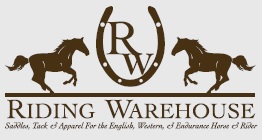
 Riley's movement seems to be pretty straight. Maybe that's why I never scrutinized his front legs very much. I had noticed certain tendencies but dismissed it as "just the way he's standing now." The vet, however, made a comment that I bet a lot of horse owners hear or think to themselves: "Why, this horse has two different feet!"
Riley's movement seems to be pretty straight. Maybe that's why I never scrutinized his front legs very much. I had noticed certain tendencies but dismissed it as "just the way he's standing now." The vet, however, made a comment that I bet a lot of horse owners hear or think to themselves: "Why, this horse has two different feet!"
I took 5-6 photos. Depending on how he stands, I see different things. In the right picture especially, you see the left front turning out. The left foot is also more upright than the left. My vet showed me how this impacts his movement and most importantly, the weight-bearing phase of his stride.
Toeing out
Horses that toe out do not land with their feet flat, which is desirable. Instead, they land on the outside of the hoof and then roll to the inside. In this gait pattern, the inside of the hoof absorbs most of the impact of the trot stride, so there is greater pressure on the inside of the bones and joints of the leg than on the outer side. The inside of the hoof will experienced increased circulation and will grow faster/steeper, resulting in the problem of sheared heels.
What are sheared heels?
In a sheared heel, the inside heel bulb of the foot is pushed upwards. The side opposite the load-bearing inside will tend to flare. . One way to mitigate the unbalanced landing is to trim the inside of the hoof slightly lower than the outside. I think this is a fairly simplistic explanation of farrier work, though. There seems to be much more to it, but that's the short answer.
But there is hope! Breeders say that while you can't be sure, it's possible a horse can 'grow out of' the toe-out tendency. The legs and shoulder are not attached to the spine -- they're sort of a free-standing structure. Young horses tend to be narrow-chested. As the chest widens, it's possible that the toes will realign. The best predictor, it seems, is parent conformation.
Resources
Hoof care for toeing out from The Horse magazineSheared heels from EquinePodiatry.com









I have a 12yo TB/Trakaner cross mare with a somewhat different oddity - she has two different sized feet - she actually wore different sized shoes. I have her barefoot now, and perhaps that will even things out a bit. I read an interesting article that suggested that this could happen with horses that are very long-legged and smaller headed (my mare) - when they are foals and as they grow they need to stand with one foot forward and one back to reach the ground to graze, affecting hoof growth. Don't know if such a thing affected your horse.
ReplyDeleteMy vet mentioned that grazing stance, but she seemed to indicate that it is something most horses do and it impacts their leg development to some degree. But Riley does have long legs...
ReplyDeleteMy middle guy has two different feet because the left front was a club foot when he was born. He had the ligament surgery which corrected the club, but the foot still tends to grow more heel and is a little narrower. However, my farrier has done an incredible job shoeing him for all these years and it is nearly impossible to notice the difference without really studying him.
ReplyDeleteNarrow chested youngsters will more than likely widen up and that will change the toeing out. I know it did with my youngster--now going on 6.
My 3.5y NSH gelding has two different feet also...his right tends to turn out and is rounder while is left is more oval. Luckily we have an *excellent* farrier who is helping us keep that right foot as straight as possible. I can always tell it's time for a trim when his trot strides start to get uneven!
ReplyDelete